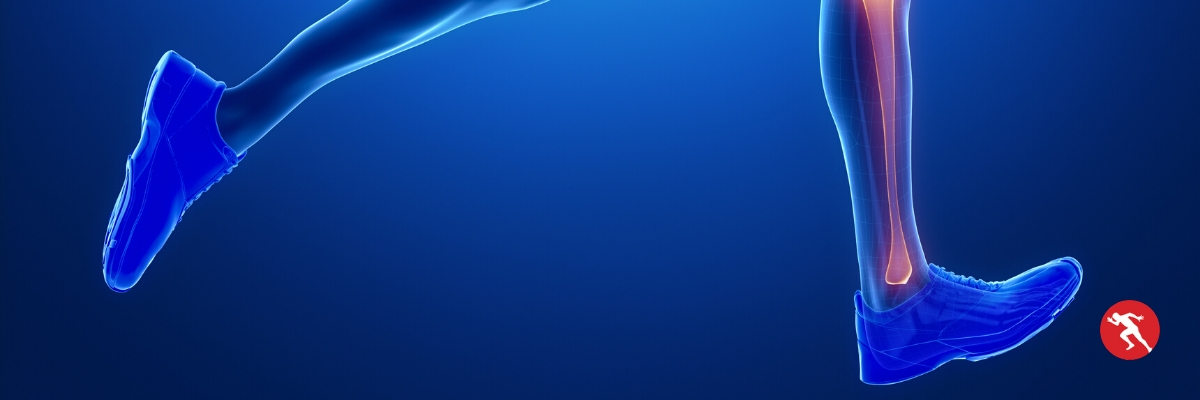What Are Shin Splints?

Shin splints are a common complaint among athletes, particularly runners.
We also see it in footballers and rugby players for example, when the ground they train on turns hard during the summer or when the ground freezes in winter.
Pain and inflammation is present along the front or inner side of the shin bone (tibia).
The pain can be sharp in nature which limits the ability to run.
Shin splints is a general term but it is medically known as ‘medial tibial stress syndrome’ or ‘medial tibial traction periostitis’.
There are other conditions that can cause shin pain which we will discuss below.
Shin Splints Symptoms
Pain is located at the front or inner side of the shin.
It can affect one or both legs at the same time.
Pain is often moderate to severe, which limits the athlete’s ability to run.
The painful area may also feel hot if inflammation is present.
What Causes Shin Splints?
Abnormal running biomechanics can place too much load or stress through the shin bone (tibia).
The soleus and flexor digitorum longus muscles attached to the inner tibial bone.
The abnormal stress causes these muscle attachments to pull on the bone and as a consequence, develop inflammation.
This can occur from the shape of an athlete’s foot.
For example, a low arch (pronation) or a high arch (supination).
Other factors include tight or weak calf muscles and stiff ankle joints.
Runners who seek physiotherapy treatment for this condition often report increasing their running mileage.
A certain running distance tips them over the threshold of what their shin bones can cope with.
Another cause of shin pain is the change in ground hardness in Winter or Summer.
Footballers who play 5-a-side indoors on a court can report the same symptoms.
Physio Performance will identify what is causing the issue and how to fix it.
Book Expert Shin Splints Assessment And Treatment
Shin Splints Treatment
Once potential causes have been identified, Physio Performance will implement a rehab programme to get you back playing sport again.
Exercises will focus on strengthening the calf and shin muscles.
Stretching of the ankle joint, Achilles and calf muscles may also be required.
You will also be advised about running distances (training load) and how to gradually return to your target goal.
If symptoms are slow to improve, you may require insoles or orthotics to speed up your recovery, if it has been identified you have low or high arches.
Book Expert Shin Splints Assessment And Treatment
Other Possible Causes of Shin Pain
Shin splints or medial tibial stress syndrome is the most common shin condition.
However, there are other conditions that can cause shin symptoms:
Tibial Stress Fracture
Seen in sports that involve running and jumping.
Pain gradually gets worse over time with exercise.
The shin can also be painful at rest.
X-rays have a limited role in diagnosing this problem.
The fracture can be so small that it does not show up.
An MRI scan would be more useful in confirming a suspected stress fracture.
The first line of treatment would be to identify what has caused the issue, such as stiff or weak muscles and joints, and limiting impact exercises until it heals.
Compartment Syndrome
This occurs when there is increased pressure around the lower leg muscles, causing a restriction in blood flow.
The calf and shin muscles enlarge during exercise but sometimes the surrounding fascia does not expand with it, causing ‘pressure’ pain.
Athletes report pain during exercise but it disappears with rest.
Fibula Stress Fracture
The fibula bone lies parallel to the tibia bone, on the outer part of the shin.
It is less common than tibial stress fractures because only a small portion of body weight passes through the fibula.
Referred Pain
Sciatica from the lower back can radiate down the leg to the shin.
There may be associated pins and needles and/or numbness.
At our Newforge Clinic we provide a range of treatments including physiotherapy, sports massage, acupuncture and dry needling. We treat many common conditions including lower back pain, shoulder injuries, neck injuries and knee injuries.
